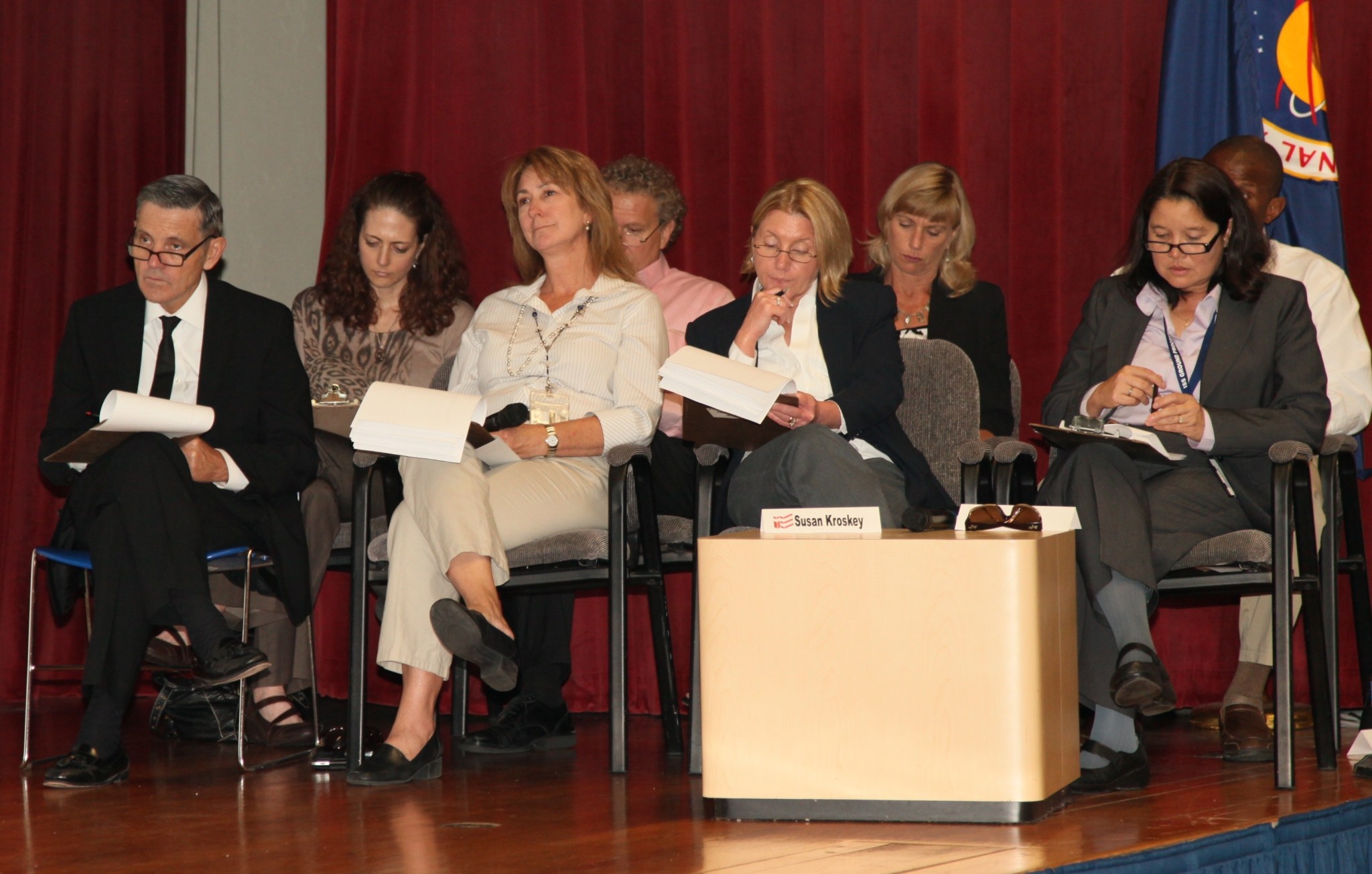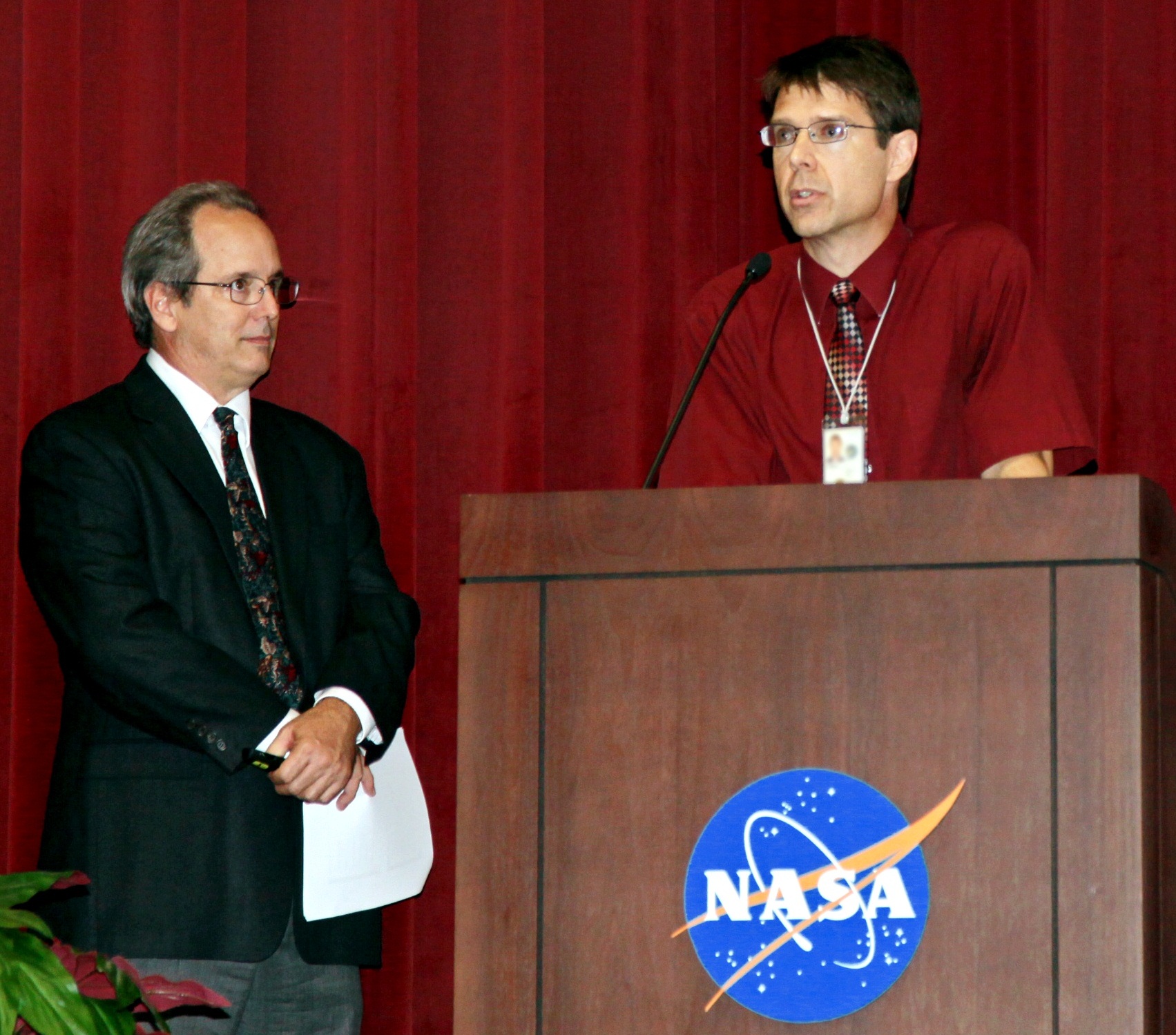As NASA’s Kennedy Space Center continues developing programs and infrastructure to become a 21st century spaceport, many employees are devising ways to do their jobs better and more efficiently. On Sept. 6, 16 Kennedy employees pitched their innovative ideas for improving the center at the Kennedy Kick-Start. The competition was part of a center-wide effort designed to increase exposure for innovative ideas and encourage their implementation.
Concepts were submitted via the Kennedy Kick-Start website and screened by the Research and Technology Board in late August.
A total of 12 proposals totaling up to $5,000 each for equipment were selected to implement ideas at Kennedy. Projects selected ran the gamut from a virtual control panel and recycling space hardware as art, to artificial gravity effects on hydroponics grown on the International Space Station, planetary ice mining and a Humvee ‘quick-attach’ mounting interface for vehicle exploration payloads.
During his all-hands meeting July 13, Bob Cabana, director of Kennedy and a former space shuttle commander, stressed that spaceport workers’ innovative expertise in launch vehicle, spacecraft operations and sustainable efforts, is leading the way in building a launch complex of the future.
As a part of the KSC Innovation Expo, individuals and employee teams pitched innovative ideas. The all-day expo gave the Kennedy workforce an opportunity to learn what others are doing and continue to nurture a creative and innovative culture.
Before the program began, Karen Thompson, of NASA’s Research and Technology Management Board, stressed the importance of developing improved ways to get things done.
“Innovators are defined as individuals who solve problems by finding new, exciting and unexpected solutions,” she said.
During 90-second presentation, the employees explained their concepts to an eight-member Kick-Start selection panel representing diverse organizations at Kennedy.
“We were really happy with the variety of topics covered by the presenters,” said David Miranda of NASA’s Information Technology and Communications Services.

An innovation by William Merrill of NASA’s Communications Infrastructure Services Division and Keith Kenyon of QinetiQ North America to make mission audio available by way of an Internet radio stream was one of those selected.
“Quite a few people have a need to listen to mission audio,” Merrill said. “We felt this idea would make access easier. Since there would be much less effort to set up the capability and the necessary equipment, it also would be a money saver.”
Environmental Protection Specialist Annie Williams proposed recycling space hardware.
“(Consider) commissioning local artists to commemorate the shuttle program using actual excessed flight hardware and other shuttle-related items to create center piece displays for the lobby of the future central campus building,” she said.
Kennedy works to spur innovation on a daily basis. By retrofitting its world-class ground systems and facilities for both government and commercial users and infusing innovative ideas into ongoing and forward-looking programs, the center and its new Kick-Start competition are helping NASA reach America’s space exploration goals.




























